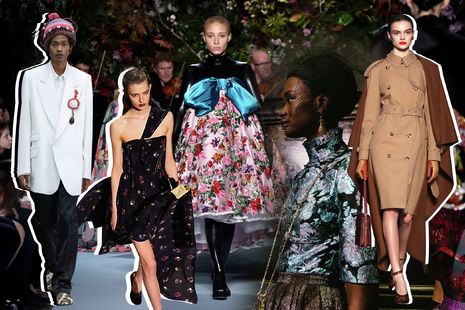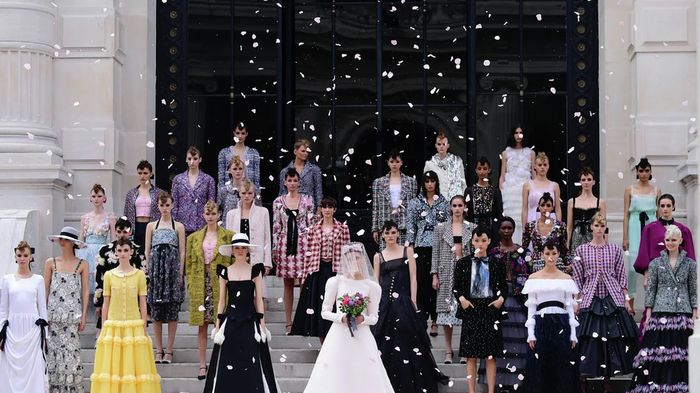Is it time to Runaway from the Runway?
After eighteen months of digital fashion shows, Ella Fraser investigates whether a return to the runway is necessary

The post-vaccine world presents the fashion industry with unprecedented challenges. After well over a year of exclusively social media campaigns, digital fashion shows, and indeed even phygital fashion shows, creatives are now faced with a series of pressing questions: what actually is the point of the fashion show? Has digital content rendered the catwalk meaningless? And, if fashion shows are having such a negative impact on the environment, are digital fashion shows the panacea to the crisis?
“Are digital fashion shows the panacea to the crisis?”
It is perhaps beneficial, before we begin, to explore the history of the fashion show. While the English designer Charles Frederick Worth introduced the concept of models in the mid-1860s, at the turn of the century ‘fashion parades’ for private audiences began to evolve into large-scale events, repurposed to foster media attention. In 1901, Lady Duff Gordon reimagined Worth’s vision, presenting her ‘Gowns of Emotion’ as what Maria Costantino, a lecturer at the London College of Fashion, called a ‘theatrical innovation’. I would argue that it is this fin-desiècle notion of the fashion spectacle — of setting, lighting, music, and choreography — that was truly revolutionary in the development of the runway. Just as the garments themselves were adjusting to (and indeed, setting) trends, fashion shows themselves were constantly evolving. Yet, Costantino also adds that this concept of the catwalk show ‘as an audio-visual spectacular’ may have ‘reached its zenith’; its fate lies in the hands of the consumer. Of course, the fashion show remains an inherently exclusive phenomenon, but its gradual democratisation through means of technology has allowed anybody to take a front-row seat.
However, this ever-expanding trajectory has become a dangerous one: biannual collections and fashion weeks are inevitably accompanied by extensive air-miles and waste of materials. In fact, according to a recent report, fashion buyers and designers alone contribute 241,000 tons of CO2 emissions a year through attendance at fashion weeks in New York, London, Paris, and Milan. Indeed, sustainability is not the only challenge facing fashion shows; other competing factors like the impact of digital technology, issues regarding ethical production, and the effects of a global pandemic are all dictating its future. Yet, as compelling as finding a more sustainable means for fashion consumption may be, for many brands the impetus to change their practices is not enough. It comes down to the basics: if runways generate publicity and income, there is little incentive to explore an alternative business model. When hundreds of thousands are reliant on an outdated industry, where will they go when it is modernised?
“There are two elements that made Margiela’s online content successful: innovation and exclusivity”
As the pandemic struck the world, high street and luxury brands no longer had the luxury to maintain the status quo. Last year, the runway was wiped out one covid case after another. As the world went into a global lockdown, brands were forced to create engaging content without any form of in-person contact. It was this idea of ‘engagement’ that proved particularly difficult to recreate in the midst of a pandemic: would editors, buyers, and the press have a rivalling experience within the comforts of their own home? It would appear that this lack of social buzz certainly did take a toll, with digital content creating less than one-third of the engagement of real-life shows. As much as the pandemic negatively affected participation, in retrospect, there is much to be learned from the ways we can use digital tools to improve our runways. Nick Knight’s mini-documentary for Margiela’s Autumn-Winter 2020 collection was a successful take on fashion in the digital realm: filmed using go-pros and drones, the documentary has accumulated over 164,000 views on Youtube and gave audience members an inside view on Galliano’s directorial process.
There are two elements that made Margiela’s online content successful: innovation and exclusivity. Galliano organised his show as a collection of calls, messages, x-rays, and thermal camera videography, breaking the mould of what you would expect at an in-person show. In addition, while Knight’s documentary can be easily accessed on Youtube, there is a certain excitement that comes with viewing something otherwise under wraps. It feels as though you are peeking into the inside world of the industry.
This being said, digital content is far from being the only solution. As much as it benefits our environment and allows for imaginative artistic outlooks, brands must find an environmentally friendly and financially viable alternative in the physical realm. Put simply, nothing parallels the in-person experience. Perhaps we should look to Copenhagen Fashion Week, which has recently introduced a sustainability requirement for any brands hoping to participate in its runways and has promised to reduce its own greenhouse gas emissions by 50% by 2022. Or maybe Francesco Risso provides a sound answer to the crisis. For her Marni Spring/Summer 2022 collection, she dressed her audience in up-cycled garments and built the set out of recuperated metal as part of a colossal ‘fashion happening’.
Regardless of what the future holds in terms of digital content, it is undeniable that the runway as we know it has been obsolete for some time. Indeed, Vogue journalist Steff Yotka lends support to this view, claiming that ‘fashion must be sustainable or risk losing its relevance’. As all of our actions are becoming increasingly determined by how they impact the planet, there is really no way that the fashion industry can continue without adjusting to society. The pandemic has allowed for a breath of fresh air and it is one that will hopefully stimulate permanent change.
 News / Caius mourns its tree-mendous loss23 December 2025
News / Caius mourns its tree-mendous loss23 December 2025 Comment / Yes, I’m brown – but I have more important things to say22 December 2025
Comment / Yes, I’m brown – but I have more important things to say22 December 2025 News / Cambridge welcomes UK rejoining the Erasmus scheme20 December 2025
News / Cambridge welcomes UK rejoining the Erasmus scheme20 December 2025 News / CUP announces funding scheme for under-represented academics19 December 2025
News / CUP announces funding scheme for under-represented academics19 December 2025 Interviews / Politics, your own way: Tilly Middlehurst on speaking out21 December 2025
Interviews / Politics, your own way: Tilly Middlehurst on speaking out21 December 2025










